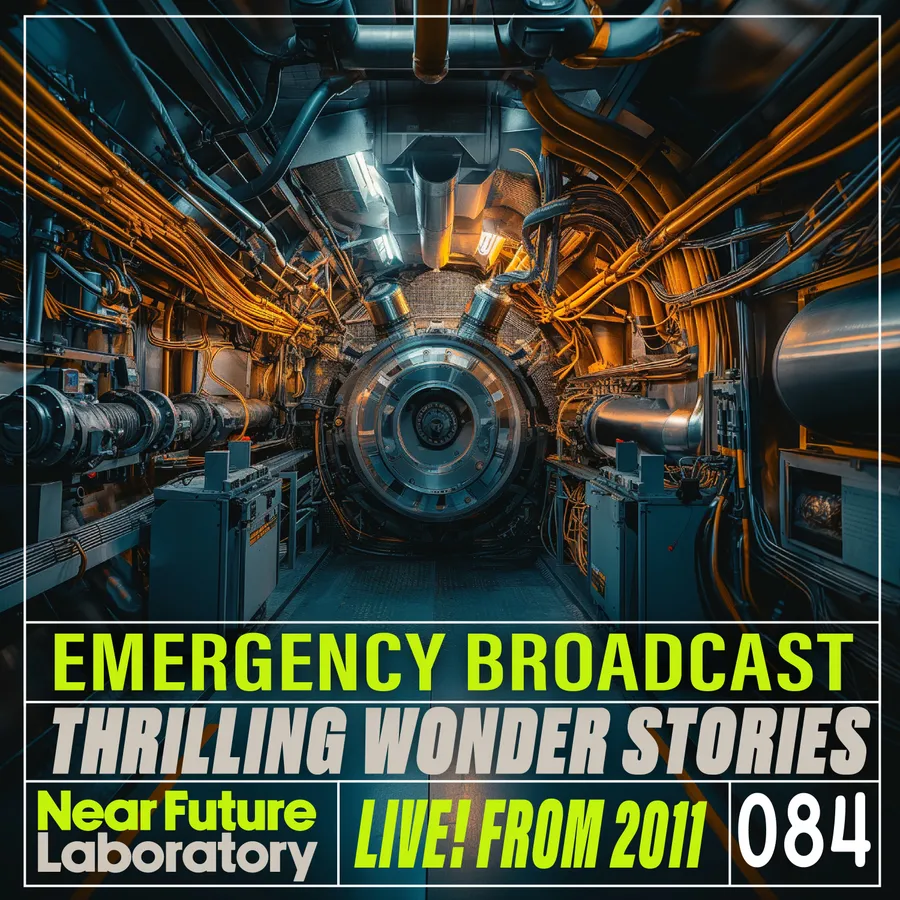
Talk Date: 10/28/11, 9:17 AM
Published On: Oct 19, 2024, 09:21
Updated On: Oct 19, 2024, 19:13

A roundtable salon-like thing with Bruce Sterling, Kevin Slavin, Matt Jones and Julian Bleecker getting into into the intersection of science, technology, and the arts. Each of us presented and the discussions covered a wide range of topics including consciousness, film special effects, artificial intelligence, and science fiction. The podcast aims to explore futuristic ideas and the potential of human creativity. These kinds of dialogues/roundtables/salons would be awesome to happen more often: a resource for listeners interested in speculative concepts and the exploration of how technology influences society and culture.
Reflecting on a Moment of Super Thrilling Wonder: A Salon at the Architectural Association
A little over 13 years ago, I found a forgotten gem on an old hard drive—a video capturing a vibrant salon-like conversation that took place in London back in November 2011. It was an event organized by Liam Young at the Architectural Association School of Architecture, featuring Matt Jones, Kevin Slavin, Bruce Sterling, and myself. Stepping back into that time, I realize how these discussions remain influential today.
Uncovering the Past with a Purpose
The discovery felt like unearthing a time capsule, both in its humble 640x360 resolution and in the ideas discussed that have only grown more relevant. That day, we explored topics stretching from design fiction to the ways algorithms shape our world. It was an intersection of thought and creativity that only comes alive when diverse voices share the same stage.
On the Role of Design and Storytelling
During the presentation, I delved into what I coined as “the special effect”—the space where imagination and reality intersect to create a vision of the future. We touched upon the notion that technology and speculative design can redefine what’s possible, urging audiences to stretch their perceptions beyond commercial constraints.
One particular focus was on Douglas Trumbull’s work for “2001: A Space Odyssey,” a prime example of how speculative visualization can paint a picture of the future that informs our present. These imaginative feats hadn’t seen the light of day on a computer screen; they were animations setting the groundwork for concepts like deep space travel—before any interface box was known to mankind.
Algorithms as Nature
Kevin Slavin’s contribution was particularly visionary, examining how algorithms silently sculpt the infrastructures around us—a modern-day geological force, if you like. He flagged a pertinent, yet often overlooked question: When do these systems transcend their human creators to act autonomously and reshape the physical and financial aspects of our world? Discussions turned to the undeniable impact of high-frequency trading and how literal landscapes, such as gold mines, are dictated by the whimsical dance of market prices.
Journeying Through Technoscientific Realities
Bruce Sterling tapped into the literary angle—how thrilling and wondrous tales from the past can invoke philosophical introspections about our present condition. He reminded us how stories, like the ones shared at the event, serve as cultural signposts pointing towards unexplored territories.
The Takeaway: Exploring Independent Insights
That discussion underscored my belief in the pursuit of independence in creative practices. It also highlighted how the narratives we weave through design fiction help us envisage alternate futures.